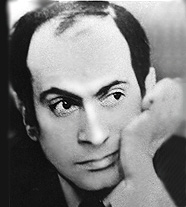During last year’s summer programme we ran an endgame workshop all about the concept and practical applications of ‘zugswang’.

Carlsen vs. Nakamura, Sinquefield Cup 2018. It’s White’s 93rd move. How did the World Champion continue his masterplan here?
For the uninitiated, here is a dictionary definition for the term:
Definition: zugzwang
(German for “compulsion to move” pronounced [‘tsu:ktsvan])
A situation found in chess and other games wherein one player is put at a disadvantage because they must make a move when they would prefer to pass or not to move. The fact that the player is compelled to move means that their position will be significantly weaker. A player is said to be “in zugzwang” when any possible move will worsen their position
This week I was very taken with two very different zugzwang ideas that were seen in the final round of the Sinquefield Cup in St Louis. There can be no better exemplars to follow than World Champion Magnus Carlsen and the dazzlingly creative Levon Aronian so both games are worth taking time to examine. In both cases the zugzwang concept was used to help the player with the White pieces to victory and a share of first place.

Aronian vs. Grischuk, Sinquefield Cup 2018. Black’s king is open but it isn’t easy to apply the finishing touch. How did Aronian proceed here?
See if you can spot the ways to create winning zugzwang positions from the diagrams on the right. The answers are given in the games in the viewer at the end of this post (I’ve also published the zugzwang examples that were used in the endgame workshop last year).
Carlsen’s game featured a typically remorseless grind against Hikaru Nakamura. Carlsen finally took victory after almost 100 moves but he sowed the seeds of his win much earlier on and his technique in the rook and pawn ending was absolutely flawless. It’s an endgame that is well worth a closer study. I’ve added a very few notes to the game viewer but you can watch GM Danny King’s ‘Powerplay Chess’ You Tube channel video about it below for a clear and erudite exposition of the ending.
By stark contrast, Aronian’s win against Alexander Grischuk was a tactical masterpiece featuring a relatively speculative sacrifice in the romantic style of Mikhail Tal. Again, there is plenty to learn from and admire prior to the zugzwang position which is merely the coup de grace. Again, Danny King provides an excellent guided tour in the video below. I’ve only really added notes about the zugzwang position in the game viewer.
